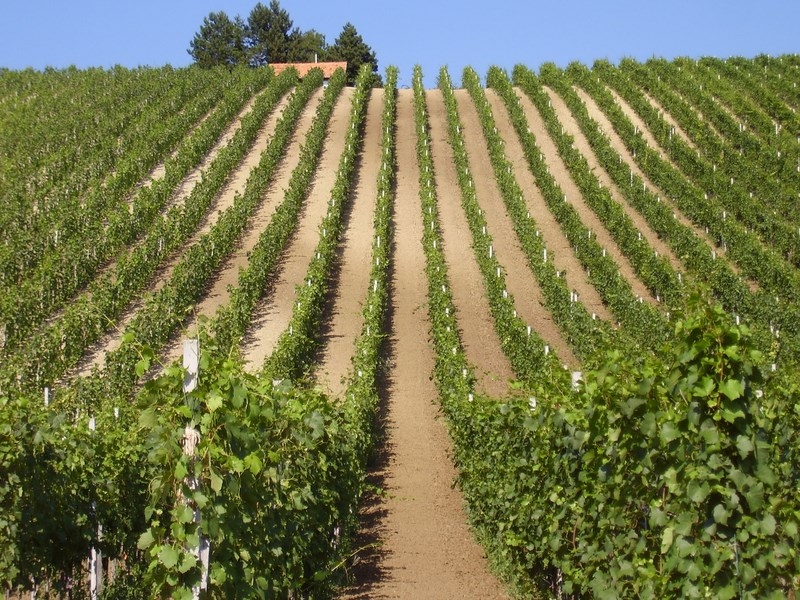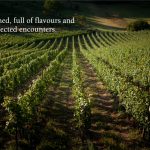Yellow Plavec, Šipelj, Steier Belina and Kraljevina are old varieties used by Franjo Kolarić from Hrastje Plešivičko near Jastrebarsko to bottle a still wine from the 2016 harvest. And he named it Old Varieties. With reason. They are old because the vineyard the grapes are from is already 60 years old, but also because similar mixtures have been cultivated on Plešivica since the middle of the last century. It was an Austro-Hungarian tradition which remains even in Vienna vineyards. Even more, Austrians protected it with the Wiener Gemischter Satz label of origin.
“Combining various varieties in the same vineyard was introduced into Vienna vineyards a long time ago in order to make harvest more balanced. They can be more than 20, and each ripens in its own period. With those ripening late there is always the danger of poor weather which can reduce quality. Mixing of varieties reduces these risks to a minimum as there will always be grapes of good quality. At the same time, such wines have scents and tastes unique to each vineyard,” explained the Austrian wine marketing committee.
Austrians also introduced other rules to be met in order to receive protection of this type of production of wine. The most represented varieties cannot exceed 50 percent, and the third most represented needs to account for at least 10 percent. Wine has to be dry, not over 12.5% alcohol and without expressive wood aromas, which requires avoiding new barrique barrels.
And while Austrian institutionalized their old varieties, providing for them one of ten labels of origin they use, the term is solely colloquial in Croatia. On Plešivica, besides the varieties in Kolarić’s vineyard, they include Neuburger, Red Veltliner, Green Silvaner, Šipon, Zelenac…
Old varieties are often mentioned in sparklings in which they are an important spice, even an equal partner to Chardonnay and other globally renowned varieties. The famous Amfora sparkling by the Tomac family is made from Chardonnay and mixed varieties from a vineyard planted in the 1930s. Kurtalj has a pink Brut Rose in which the Pinot Nero is accompanied by mixed varieties from an old vineyard, and the white sparkling DRI, Chardonnay and Riesling are joined by Green Silvaner and Šipon. Chardonnay and Riesling are two stars in the sparkling Three Stars by the Jagunić family, while the third is again a mixture of varieties. Franjo Kolarić also has a white sparkling Coletti Brut Nature, with 50 percent Rhine Riesling and the other half from four varieties from the old vineyard we mentioned.
Producers of sparklings, as well as still wines from old varieties, use relatively modern technologies. They are stainless steel tanks which have temperature control so the wine ferments with the speed the winemaker sets, thus extracting the best from old grapes. On the other hand, for one of the newer varieties on Plešivica, Kolarić used a technology from the first historical wineries from 5.000 and more years ago. Pinot Gris and the grapes from last year’s harvest are still in an amphora buried in the ground. Ahead of Easter they will be pressed and long maturation in a barrel. Almost certainly a wooden one and almost certainly a large one. They will sleep in it for at least one, if not two winters, and then spend several more months in a bottle. They will thus see the market in maybe two years. Tastings in the winery have shown the wine has purified itself in the amphora. The scent is still quite closed, barely sensible, and the taste is full, almost flaunting. This is the seventh wine Franjo Kolarić has made from Pinot Gris.
How much he cares for Pinot Gris can be seen in the name of his still pink wine – “With Love.” It is not a pure ‘gris,’ but a mixture with Pinot Nero. If it can be called a mix, as Pinot Gris is not a variety, but a natural mutant of Pinot Nero which has lost part of its color. Grapes remained slightly pink so the wine can be the same color. Kolarić has it too. The wine is Selection from pure Pinot Gris which he says is “not white, and not rose.” Many joke it can be called “brose,” but not many joke after tasting it. A dry wine full of fine scents and taste of pear, citrus and tropical fruit. Pure Pinot Gris from last year’s harvest is still in the amphora. Fermenting for months on grapes so it has a darker pink color, with at least two more years of maturation, settling and permeation of scents and tastes in the barrel and bottle before the market. Tasting of the unfinished wine have shown it has great potential.
Sweeter wines from pure Pinot Gris are the semi-sweet Kasna Berba (late harvest) and the completely sweet Ivana Slatkica, and the base wine for the future sparkling Coletti Rose is another fine mixture of Pinot Gris and Nero. Previous Coletti Rose Brut Nature were made from Portugieser, Pinot Nero and Chardonnay.
Coletti is a nickname given to Franjo by his friend from Italy. It became a brand for his sparklings, and is now on the labels of till wines as well.
The family cultivates some six hectares of their own vineyards, buying off grapes for years from another 10 hectares owned by neighbors. Their best position is in Malunj and is called Radenci. There they have 20.000 vines at an altitude of 300 meters. The pride of the winery is a wooden barrel from 1938, brought as dowry by Franjo’s grandmother.
Besides the mentioned varieties, the family vineyards also grow Portugieser, Chardonnay, Riesling, Graševina, Neuburger (it’s excellent), Sauvignon (first harvest was last year) and Green Silvaner. Kolarić boasts with reason of the 1997 Green Silvaner, the year when he began to get serious about wines. The wine is still holding up quite well today. If such an ‘old man’ is still in good shape, it should not be a surprise the 2014 Silvaner is quite young. It can still be found in supermarkets, occasionally for quite favourable prices.
In the winery in Hrastje Plešivičko is also a large hall for weddings, birthdays, christenings and team buildings, while the family makes fine homemade food. They also offer accommodation in 15 rooms with a four-star category. Nine kilometres from the winery, beneath Japetić, is the Forest Castle, summer home of Count Erdödy built in 1656. It houses two halls which can host 60 people, with two triple-bed rooms and third in a large wooden barrel. It has only one bed, which doesn’t mean a couple can’t squeeze in for a night’s rest or something else. The Castle offers a wonderful view of the Sveta Jana villages and vineyards.
Translated from Vino.hr, for the original click here.











